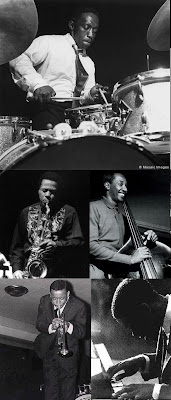 As our Jazz month draws to a close lets ease ourselves gently back towards Brazil and Bossa...
As our Jazz month draws to a close lets ease ourselves gently back towards Brazil and Bossa...American jazz and swing music were a great influence on Brazilian guitar maestro Baden Powell de Aquino (1937-2000).
This LP dates from 1963, when Baden Powell's collaborations with American jazz musicians were bringing him to international attention. Jimmy Pratt had drummed with a number of Jazz legends, most notably Charlie Parker.
Link:http://rapidshare.com/files/402637372/Baden_Powell_-_Swings_with_Jimmy_Pratt.rar
Here is a link to some info on the recording:http://www.brazil-on-guitar.de/opus/orig/pratt.html

















































































